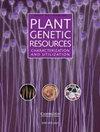In-depth morphological assessment revealed significant genetic variability in common buckwheat (Fagopyrum esculentum) and tartary buckwheat (Fagopyrum tataricum) germplasm
IF 0.7
4区 生物学
Q3 PLANT SCIENCES
Plant Genetic Resources: Characterization and Utilization
Pub Date : 2022-12-01
DOI:10.1017/S1479262123000321
引用次数: 1
Abstract
Abstract Buckwheat (Fagopyrum spp.) is an important crop in the high-altitude regions of the Northwest Indian Himalayas. The agro-climatic heterogeneity of this region offers a great deal of diversity in the agro-morphology of buckwheat species. In this study, a total of 61 accessions of Fagopyrum esculentum and Fagopyrum tataricum were characterized for 17 morphological (8 qualitative and 9 quantitative) traits. Significant differences (P < 0.0001) among all the traits were revealed by one-way analysis of variance. Further, significant phenotypic variability in both qualitative as well as quantitative traits was also observed. Both positive and negative correlations were observed between the traits of agronomic relevance. The principal component analysis (PCA) reveals about 69% variability among the first six components. The accessions were divided into two key clusters with numerous subclusters by considering the unweighted pair group method with arithmetic mean dendrogram. A cluster of 19 accessions was formed utilizing a PCA scatter plot indicating accessions with maximum values for important quality traits like plant height, leaf blade width, stem colour (red), primary branches, inflorescence length, flower colour (greenish-yellow), seed anthocyanin colour (green), seed shape (ovate) and seed weight. These accessions can be of vital significance for future buckwheat breeding programmes. The findings from the current study will form a favourable base for genetic resource management, improved cultivation and applications of buckwheat at the commercial level in the northwestern Himalayas of India.深入形态学分析表明,普通荞麦(Fagopyrum esculentum)和苦荞(Fagopyrum tataricum)种质资源具有显著的遗传变异
荞麦(Fagopyrum spp.)是印度西北喜马拉雅高海拔地区的重要作物。该地区农业气候的异质性为荞麦的农业形态提供了很大的多样性。本研究共对61份荞麦(Fagopyrum esculentum)和苦荞(Fagopyrum tararicum)材料进行了17个形态性状(8个定性性状和9个定量性状)的鉴定。单因素方差分析显示各性状间差异有统计学意义(P < 0.0001)。此外,在质量和数量性状上也观察到显著的表型变异。农艺相关性状之间存在正相关和负相关。主成分分析(PCA)揭示了前六个成分之间约69%的变异性。采用带算术平均树形图的非加权对群方法,将数据集划分为两个具有多个子簇的关键簇。利用主成分分析(PCA)散点图对19个品种进行聚类分析,表明植株高度、叶片宽度、茎颜色(红色)、初级分枝、花序长度、花色(黄绿色)、种子花色苷颜色(绿色)、种子形状(卵形)和种子质量等重要品质性状的最大值。这些新品种的加入对未来的荞麦育种计划具有重要意义。目前研究的结果将为印度西北喜马拉雅地区荞麦的遗传资源管理、改良种植和商业应用奠定有利的基础。
本文章由计算机程序翻译,如有差异,请以英文原文为准。
求助全文
约1分钟内获得全文
求助全文
来源期刊

Plant Genetic Resources: Characterization and Utilization
Agricultural and Biological Sciences-Agronomy and Crop Science
CiteScore
2.80
自引率
0.00%
发文量
29
审稿时长
>12 weeks
期刊介绍:
Plant Genetic Resources is an international journal which provides a forum for describing the application of novel genomic technologies, as well as their integration with established techniques, towards the understanding of the genetic variation captured in both in situ and ex situ collections of crop and non-crop plants; and for the airing of wider issues relevant to plant germplasm conservation and utilisation. We particularly welcome multi-disciplinary approaches that incorporate both a technical and a socio-economic focus. Technical aspects can cover developments in technologies of potential or demonstrated relevance to the analysis of variation and diversity at the phenotypic and genotypic levels.
 求助内容:
求助内容: 应助结果提醒方式:
应助结果提醒方式:


